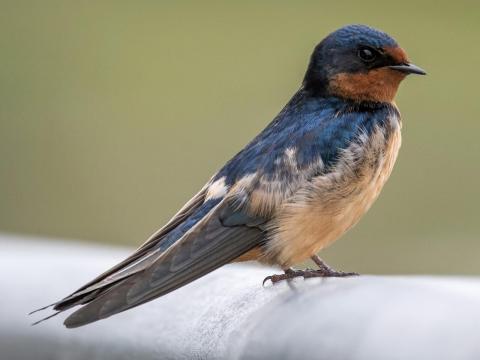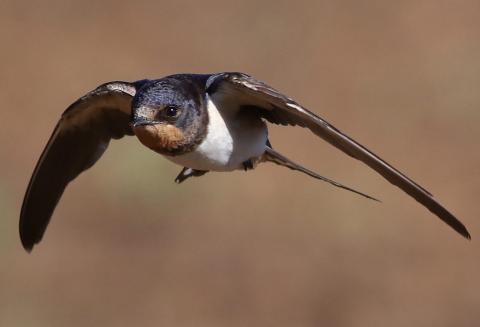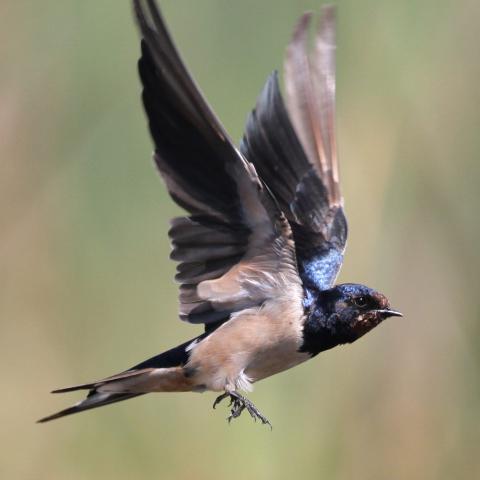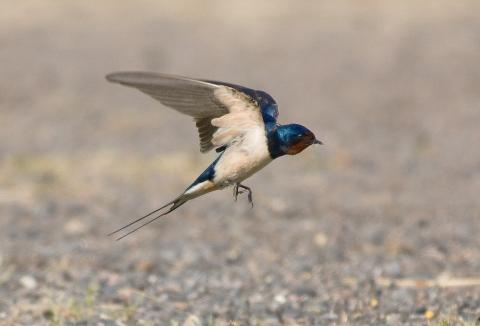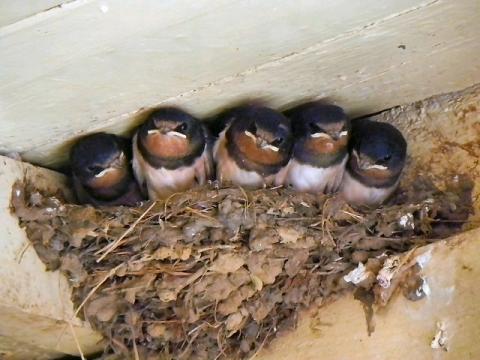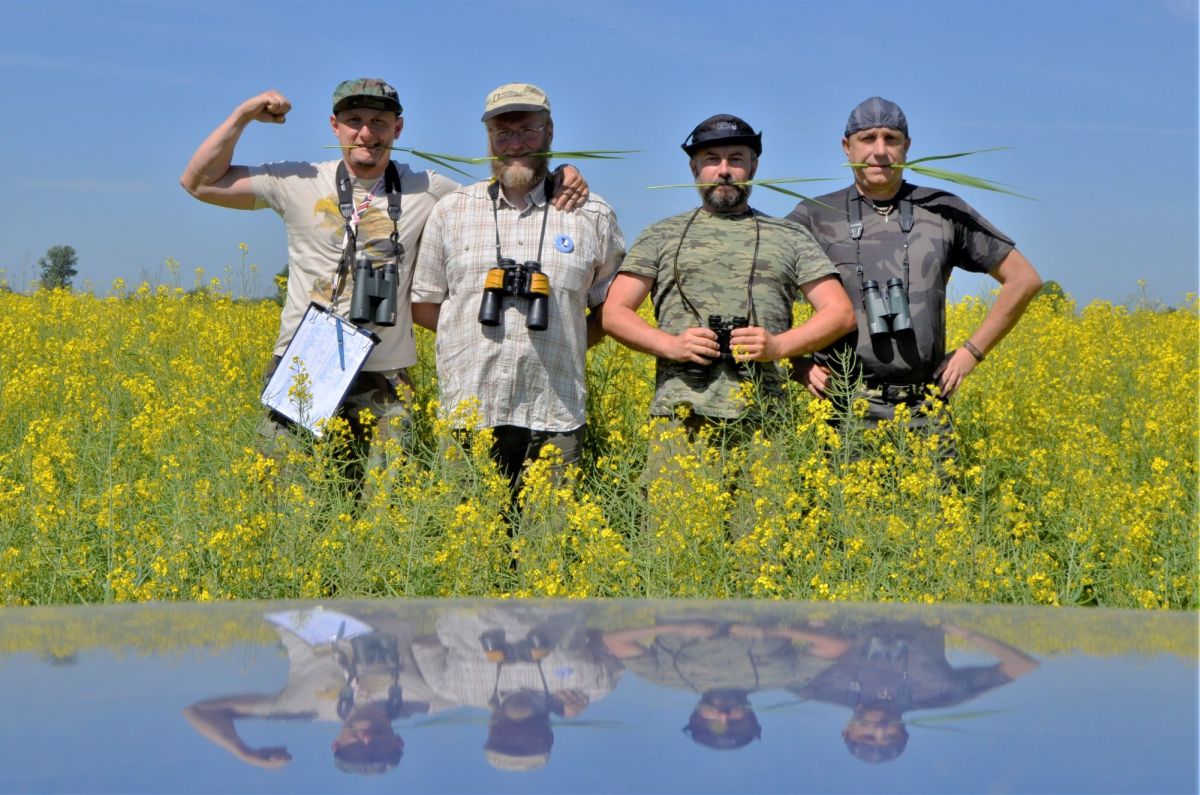Basic information
The barn swallow (Hirundo rustica) is the most widespread species of swallow in the world. In fact, it appears to have the largest natural distribution of any of the world's passerine, ranging over 251 million square kilometers globally.[2] It is a distinctive passerine bird with blue upperparts and a long, deeply forked tail. It is found in Europe, Asia, Africa and the Americas. In Anglophone Europe it is just called the swallow; in Northern Europe it is the only common species called a "swallow" rather than a "martin".[3]
There are six subspecies of barn swallow, which breed across the Northern Hemisphere. Four are strongly migratory, and their wintering grounds cover much of the Southern Hemisphere as far south as central Argentina, the Cape Province of South Africa, and northern Australia. Its huge range means that the barn swallow is not endangered, although there may be local population declines due to specific threats.
Migration information
Swallow arrives in the Europe mid-April, having flown 10,000 km from its winter quarters in southern Africa. The journey takes about four weeks, and males usually arrive first. By early May, most Swallows have started breeding.
By early September, most Swallows are preparing to migrate. They flutter about restlessly, and often gather on telegraph wires. Most leave the UK during September, with early broods of youngsters being the first to go. But a few stragglers may hang around into October.
The return journey to Africa takes about six weeks. Swallows from different parts of Europe fly to different destinations.
Swallows migrate during daylight, flying quite low and at night they roost in huge flocks in reed-beds at traditional stopover spots.
For years people have celebrated their sudden appearance as a sign that summer is on the way.
British Trust for Ornithology is tracking Cuckoos to learn more about the routes and stop-over sites used and to understand all aspects of the Cuckoo’s annual cycle. They currently have 12 Cuckoos fitted with satellite-tags, and you can follow them and learn about their fascinating joiurney here.

Barn Swallow
records



